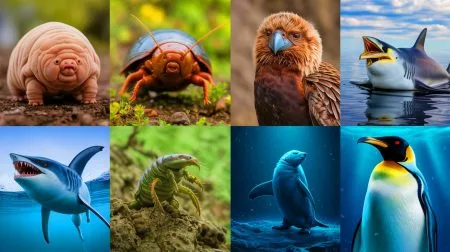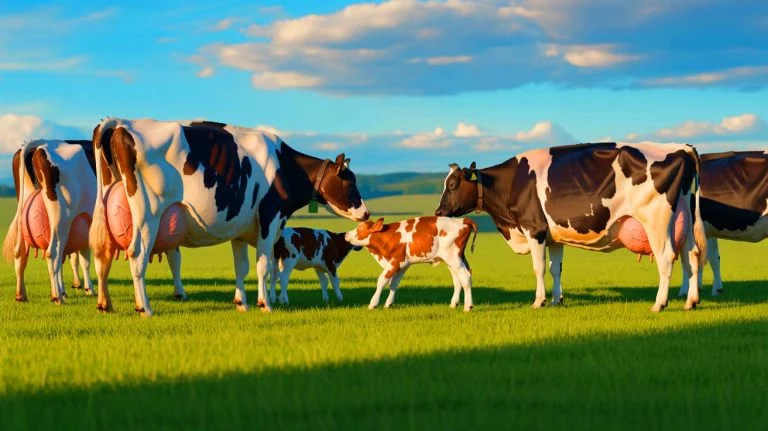| IN A NUTSHELL |
|
The H5N1 bird flu poses an urgent threat to both animal and human health, as revealed by a recent study. This highly contagious virus, typically known for affecting respiratory systems, has baffled scientists by invading the mammary glands of dairy cows. Conducted under the guidance of Professor Hualan Chen from the Harbin Veterinary Research Institute, this research uncovers the pathway through which the virus spreads among cattle. With devastating impacts already observed in the United States, this revelation is crucial for developing strategies to control and prevent future outbreaks. The study also holds global significance for the dairy industry, emphasizing the need for immediate action.
Study on Cattle in China
The H5N1 bird flu has been a concern for global health since its impact on poultry and wild birds intensified in 2021. However, the situation took a dramatic turn in March 2024 when dairy cattle in the United States became the new victims. By June 2025, the virus had affected over 1,070 dairy farms across 17 states, resulting in a mortality rate of up to 10% among infected cattle. The human impact is also worrisome, with 41 dairy farm workers contracting the virus. This crisis not only threatens the dairy industry but also public health, as the virus damages mammary glands and contaminates milk. Remarkably, genes of the H5N1 virus were found in 25% of U.S. retail milk samples. The pressing question is how a respiratory pathogen infiltrates the mammary glands of dairy cows. The research involved 50 cattle housed in a high-security facility, meticulously examining the virus’s replication and spread through various inoculation methods.
Discover the Top Nutrient-Rich Foods that Can Assist in Your Weight Loss Journey
Potential Vaccines
The study revealed that the virus only replicated in the mouth and respiratory tract when it entered through the nose. When directly introduced into the mammary gland, the virus was contained, indicating that the natural infection route is through the teat. This led to the hypothesis that “mouth-to-teat” transmission could be the pathway for infection. Some lactating cows, known for “stealing milk” through self-nursing or mutual-nursing, might facilitate this transmission. Bovine oral tissues, rich in sialic acid receptors, are particularly susceptible to viral infection from contaminated feed and water, allowing the virus to efficiently replicate and spread. The researchers confirmed that calves with H5N1 in their mouths could transmit the virus to the mammary glands of the cows they nursed. The mystery was unraveled, paving the way for potential solutions. Could vaccination, successful for avian influenza in poultry, protect cattle as well? Tests of two vaccines in lactating cattle showed promising results. Both an H5 inactivated vaccine and a hemagglutinin-based DNA vaccine offered complete protection against H5N1, even under high-dose viral challenges.
Strategies for Disease Management
The successful demonstration of vaccine efficacy provides a critical strategy for protecting dairy herds and safeguarding public health. The study suggests that implementing vaccination programs could be a viable solution for controlling H5N1 outbreaks in cattle. This approach not only shields cattle from infection but also helps maintain the integrity of the milk supply chain. Furthermore, the research underscores the importance of monitoring and managing cattle interactions, particularly focusing on calves and their nursing behaviors. By understanding the specific transmission routes, farmers and veterinarians can implement targeted measures to disrupt the spread of the virus. The study also highlights the need for global collaboration, as the lessons learned could inform strategies in other countries facing similar threats.
Implications for Global Health
The findings of this study, published in the journal National Science Review, have significant implications for global health and the dairy industry. As H5N1 continues to spread, it is imperative to adopt comprehensive strategies that incorporate vaccination, surveillance, and biosecurity measures. The research conducted by Professor Chen and her team offers a roadmap for managing the disease not only in the United States but also in other countries at risk. By addressing the root causes and transmission pathways, the dairy industry can mitigate the impact of future outbreaks. The study serves as a reminder of the interconnectedness of animal and human health, urging stakeholders to prioritize proactive measures.
As we navigate the complexities of H5N1 and its impact on cattle, the need for further research and collaboration becomes evident. How can the global community come together to effectively combat this threat, and what additional measures can be implemented to ensure the safety of both animals and humans?
Did you like it? 4.4/5 (21)








Wow, I never thought bird flu could affect cows! Nature is wild. 🐄🦠
How do they ensure the vaccines are effective and safe for the cattle?
This is some serious stuff. Should we be worried about milk safety now?
Thank you for the in-depth analysis. This is a wake-up call for the dairy industry.
Did anyone else find the idea of virus-carrying calves a bit terrifying? 😳
So, what does this mean for dairy prices? Are we expecting a rise?